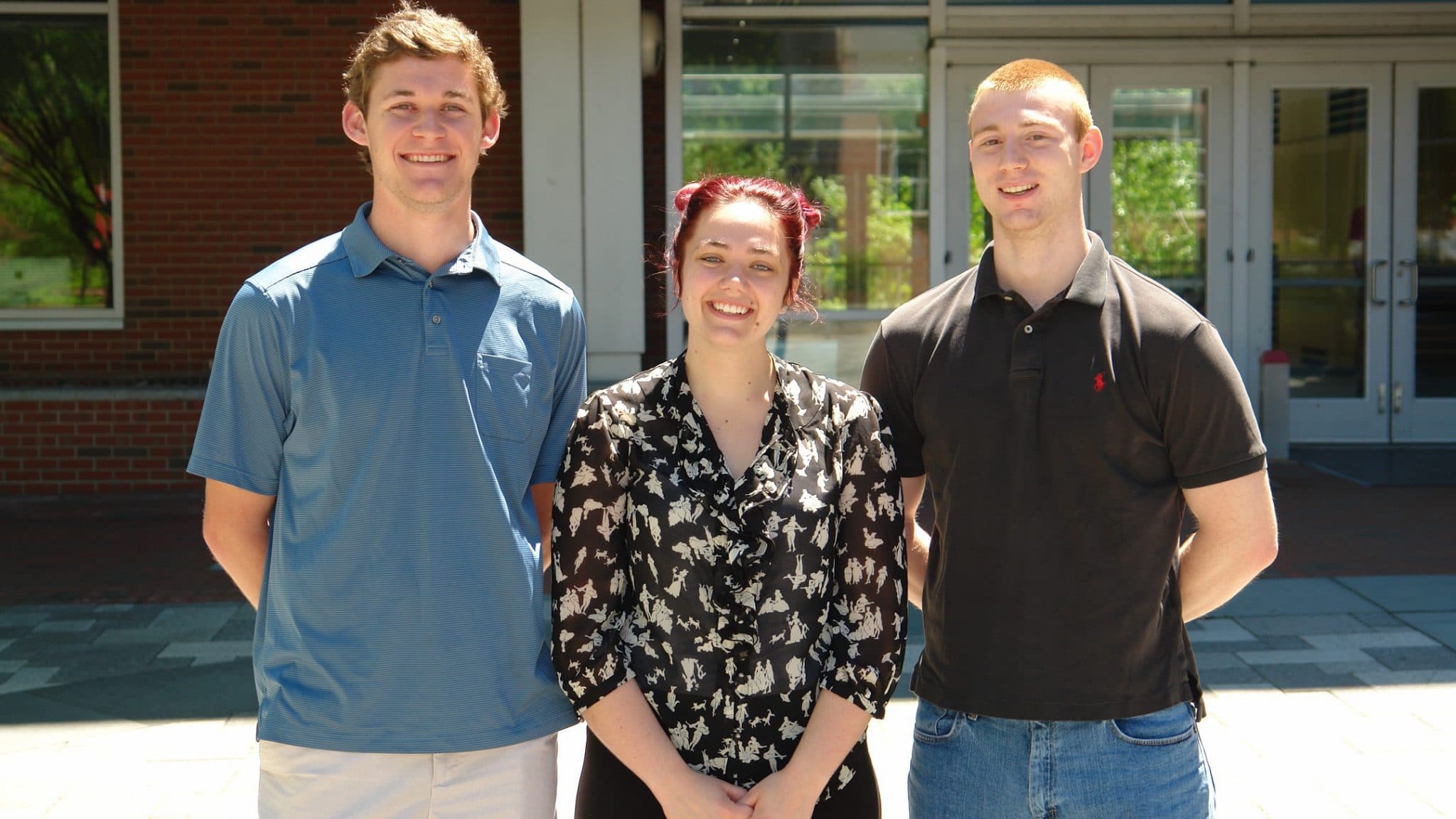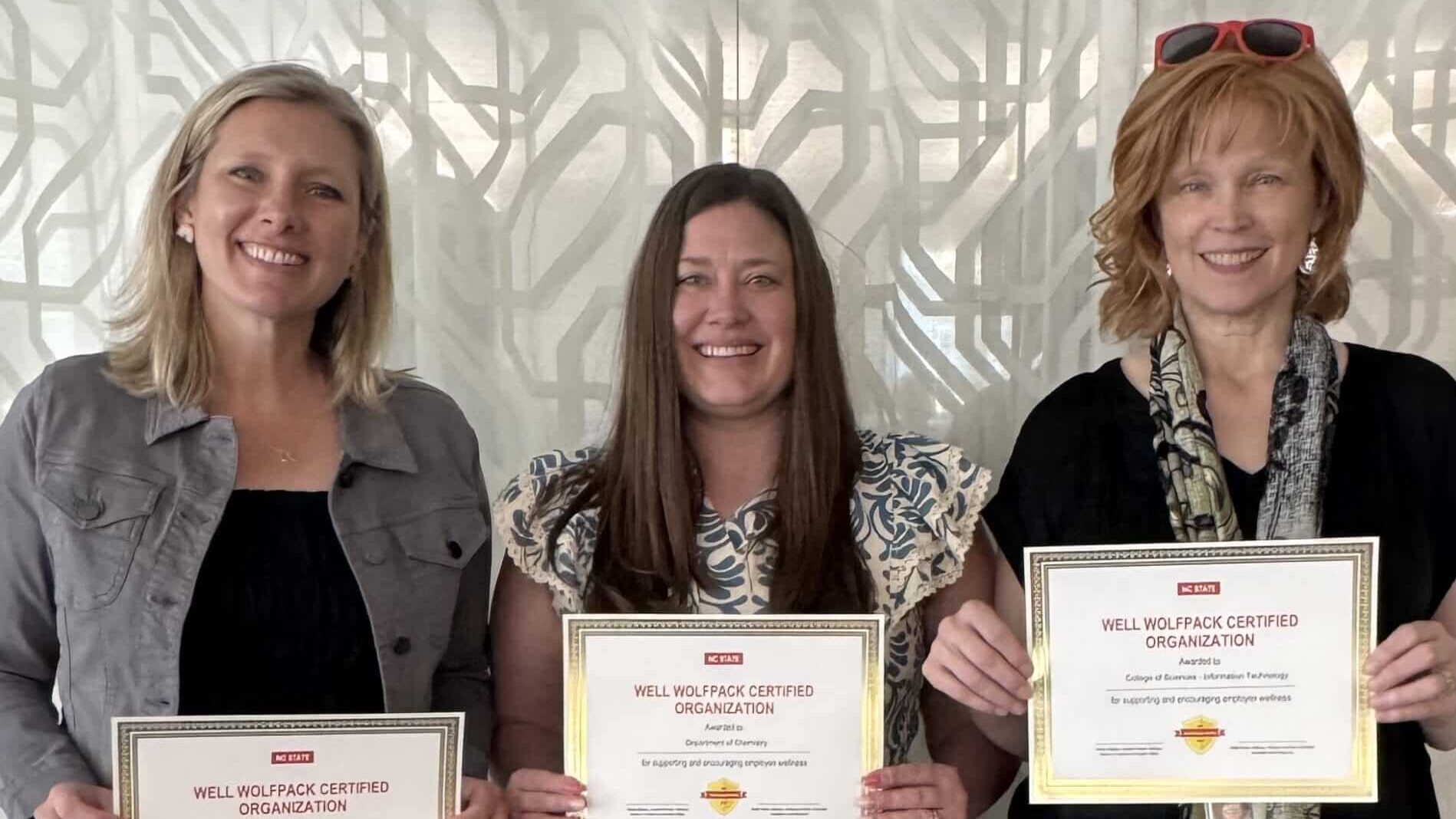Beating the Traffic: Students’ Highway Toll Model Wins International Award

It would be intimidating enough to be asked to find a solution to an infrastructure problem that has stumped professionals around the world. Now, imagine you only had four days in which to do it. A team of NC State students showed that this seemingly impossible task was not so impossible.
The team of students — math majors Graham Pash and Jaye Sudweeks and science, technology and society major Davis Atkinson — was named one of 13 Outstanding Winners among more than 8,800 entrants in the international Mathematical Contest in Modeling, sponsored by the Consortium for Mathematics and Its Applications. Their challenge was to model the best traffic pattern for merging at a highway toll facility, accounting for variables like self-driving vehicles, traffic surges and human or automatic toll collectors — and they had just 99 hours in which to do it.
The team received a selection of six problems on Thursday night and had until that Monday night to choose one problem and produce a simulated model and solution paper.
The students brainstormed together and then delegated duties, with Sudweeks doing much of the background research on existing tollbooths and factors like traffic patterns and length of cars and Pash and Atkinson working on coding their model using specialized software. In the first two days of the challenge the team laid the groundwork for figuring out their approach, but the last two days were a sprint to the finish, with lots of long, sleepless hours spent huddled around computers.
“You always feel good about things the first two days, and then you hit panic mode,” Pash said.
The tight deadline forced the students to approach the problem differently than they would have if they had more time, and in many ways that proved beneficial. “It forces you to prioritize what you want to do,” Pash said. “You don’t want to make a too-complex model but also not a too-simple model that’s not actually capturing what’s going on.”
“You really just have to make simplifying assumptions,” Sudweeks added. “There are too many variables to consider otherwise.”
In the end, the team concluded that symmetric patterns of merging in and out of toll plazas were most effective and efficient. They also found that there would be fewer accidents if drivers were moving slowly but consistently than if they were braking suddenly or sitting still, and that lanes equipped with sensors for automatic payment moved traffic through more quickly than did cash lanes. Adjusting the models to account for self-driving cars had less of an impact than they expected, since it would take more of them to cancel out the effects of bad human drivers than we are likely to see on the roads in the near future.
One of the team’s toll-plaza models, showing regular drivers in blue and driverless cars in purple.
The team was excited to learn that they were among the five teams receiving top honors for their problem (and the only team from the U.S.), which was the problem chosen by more than half of the entrants into the competition. They were also selected by independent judges to receive two additional prizes for their solution, more than any of the other honorees in their category. One of these was from the Mathematical Association of America, which has invited the students to present at their annual MathFest conference in Chicago in late July.
Both Sudweeks and Pash are veterans of this competition, having competed three times at the high school and university levels, but this was their first time receiving Outstanding Winner honors. The challenge of connecting their education to real-world problems and exploring different areas of math is what keeps them coming back.
“You sit in classes and learn things that can be ephemeral, but this helps ground what you’re learning,” Sudweeks said.
“People talk about how math isn’t important in the real world, but this helps you bring together different types of math and see how it does matter,” Pash said.
They also appreciated how the solutions they developed could help shape real policy. Their challenge solution included a letter to the New Jersey Turnpike Authority explaining their model. “I think there’s a lot of power in thinking what you do can affect something and that there’s value in your work,” Sudweeks said. “It makes you realize you can have a real impact on the world.”
- Categories:


